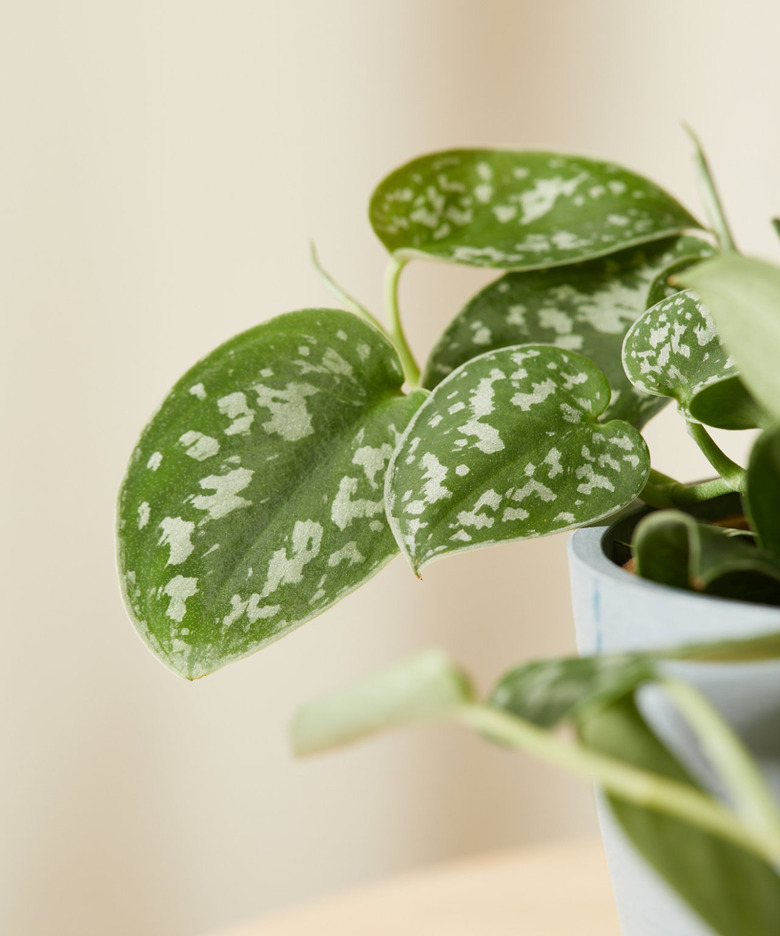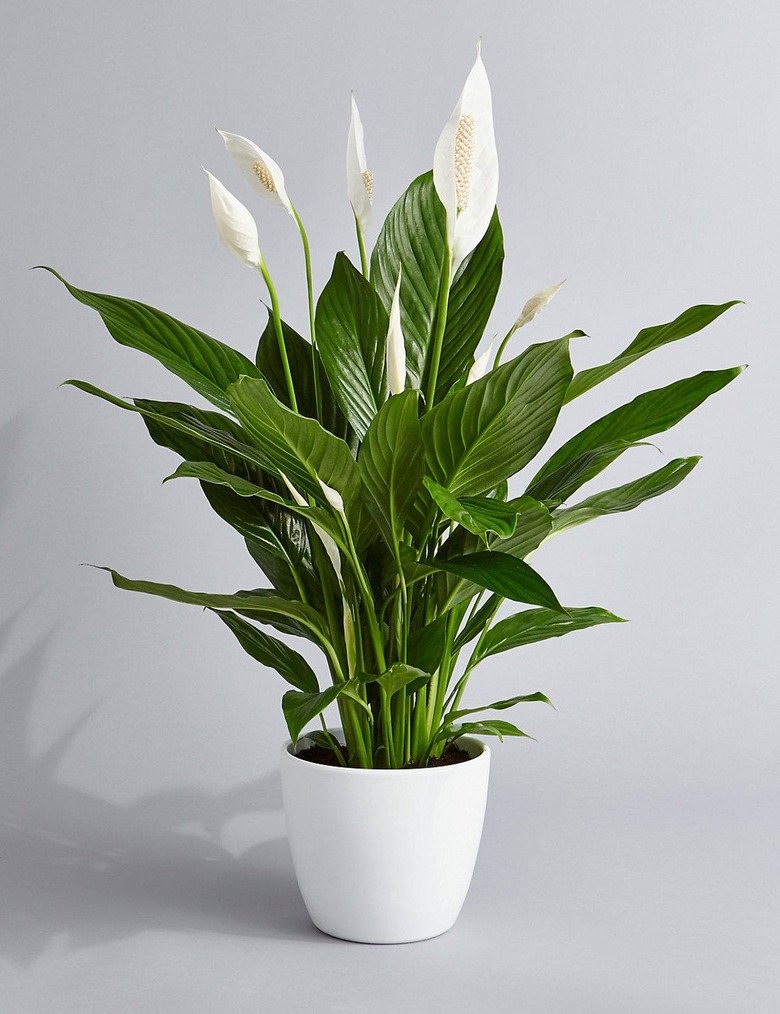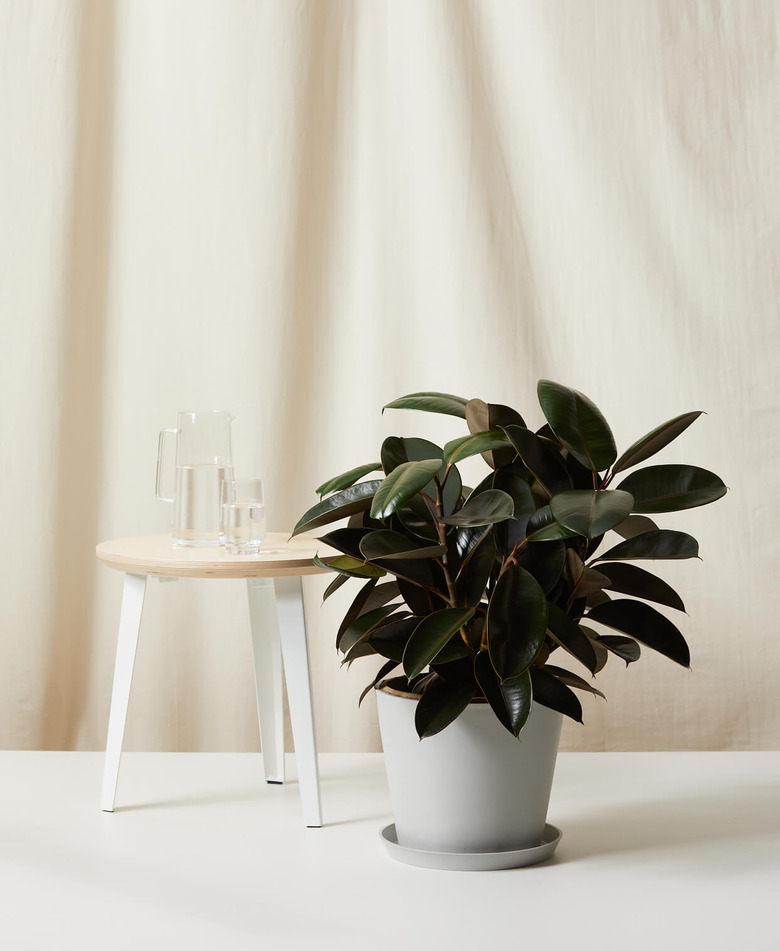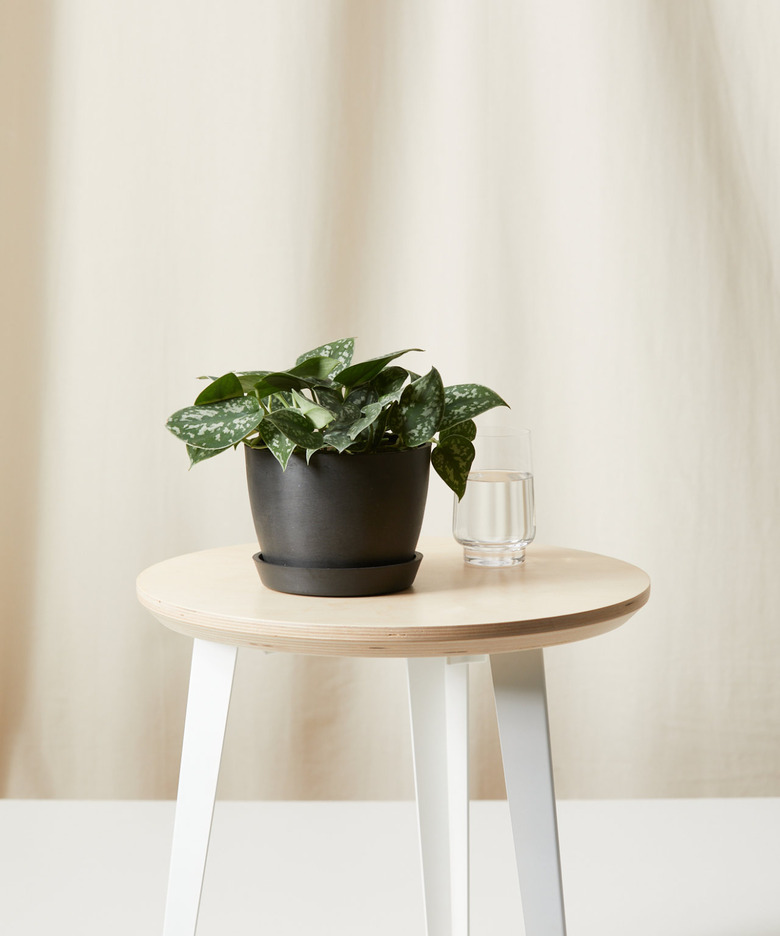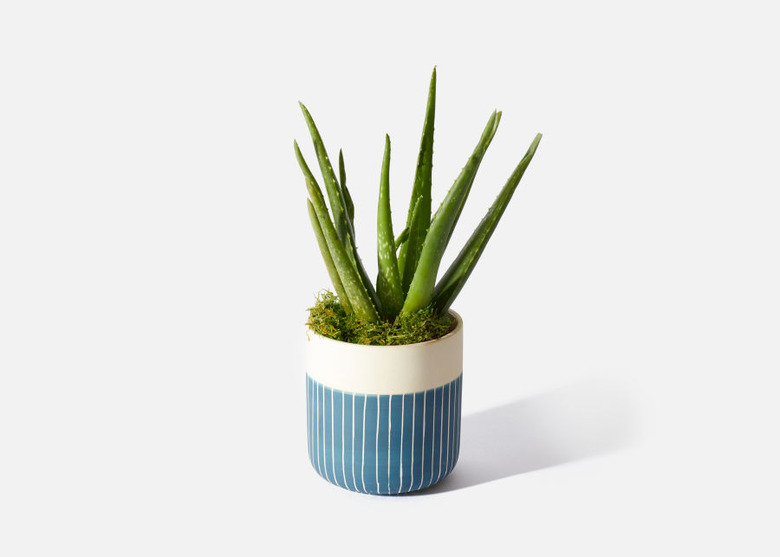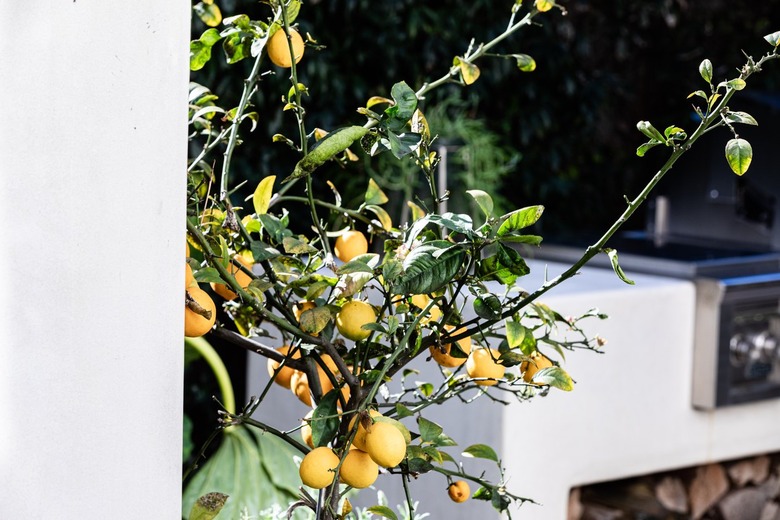These Plants Uniquely Complement Farmhouse Style
Traditional but not trite, charming but not precious. Farmhouse style is put-up-your-feet comfortable but with an edge of sophistication and lots of character. To match this style that everyone seems to be obsessed with, you'll have to pick your houseplants carefully. Nothing too delicate, too needy, or too frothy. Nothing too eccentric.
This narrows down the possibilities, but don't despair. Some plants are just made for this classic look and we're going to tell you about five of them.
Peace Lily
Peace Lily
With large lush leaves arching upwards and oh-so-simple flowers rising above the foliage, the peace lily (Spathiphyllum wallisii) hits the farmhouse-style sweet spot between classic and cool. The leaves are solid, eight to 12 inches long, and a rich shade of green on the cusp of emerald and forest. The blooms stand above this sea of green on tall stems, looking a bit like modified Calla lilies. Each one presents as a single upright pearl-white "petal" surrounding a small spike of golden flowers like a hooded sheath. The "petal" is actually a modified leaf called a spathe.
The look is simple but stunning, and complements the weathered wood and reclaimed metal so prevalent in a farmhouse-style home. And the peace lily is a no-fuss plant that has a practical side: NASA tells us that peace lilies in the house improve air quality, removing formaldehyde, benzene, and carbon monoxide from the surrounding air. Place these easy-care beauties in a warm, bright area away from the afternoon sun. Water when the soil is dry to the touch.
Rubber Tree
Rubber Tree
Are you sick of sweeping up the fallen leaves of your weeping fig (Ficus benjamina) every day, or fussing about how much water it needs? That's not the only ficus in town. We've found the perfect farmhouse ficus, a tried and true favorite: the classic rubber tree (Ficus elastica). Instead of hundreds of small leaves in a messy mass, the rubber tree offers shiny, leathery leaves the size and shape of eggplants.
The rubber tree knows how to scrape the sky in its native habitat, the jungles in India and Malaysia, but indoors, the striking plants stops its upward climb at about 10 feet. Like everything in farmhouse style, rubber trees are made for the long haul. They can last 15 years or more with proper care: morning sun, well-draining soil, and irrigation when the top of the soil is dry to the touch. Bet you can't resist dusting off those glossy leaves occasionally as well to keep them shining.
Pothos Plant
Pothos Plant
If only every cascading plant were as easy to care for as pothos (Epipremnum aureum)! The apple-green leaves are heart-shaped and usually highlighted with gold or white variegation, and they look elegant flowing over the sides of a hanging basket or large container.
Given its good looks and the fact that it hails from the French Polynesian islands, you might think pothos is a prima donna, but nothing could be farther from the truth. It is virtually indestructible, bouncing back from months of neglect with amazing vigor. And if you want more pothos plants, just cut a stem and stick it in soil.
Pothos works in a farmhouse-style house because it's basically just leaves. A gorgeous mass of leaves, yes, but in the end, just leaves falling over themselves in a graceful, joyful ode to life. Find a vintage basket, hang it from one of those exposed roof beams, and watch how the combination clicks. A little water every week or so and you are good for the long haul. And oh yes, NASA lists pothos as one of the best air-purifying houseplants on the planet, too.
Aloe Vera
Aloe Vera
Simple but surprising is a good way to describe the aloe vera (Aloe vera) plant, one of the few plants with a common name that is exactly the same as its scientific name. When you see aloe for the first time, you note its extremely simple growth pattern: no stem, long, pointed leaves fanning up from the base, a classic rosette that would look perfectly at home on a butcher-block countertop or a Shaker cabinet.
So what makes it surprising? Aloe is a succulent and the leaves are thick, like fat, flat fingers. They are stocked full of water to allow the plant to survive drought conditions. The leaves are a bright, glowing green with lighter speckles, and edged along the margins with little teeth.
While aloe is attractive, it is more than just a pretty face. The farmhouse style demands utility, and aloe delivers. The cool gel inside an aloe leaf soothes a sunburned arm or relieves pain from cuts and scrapes. The plant also happens to be extremely low maintenance. Well-draining soil, bright indirect light and deep but infrequent watering is all this succulent requires to thrive.
"Improved Meyer" Lemon Tree
"Improved Meyer" Lemon Tree
One of the dangers of moving your home toward farmhouse style is overdoing it. So, it's better to have one classic but exceptional container plant instead of a bunch of tiny pots.
So go with a Meyer lemon tree. Experts agree that the "Improved Meyer" lemon is the classic indoor fruiting tree, with glossy, dark green leaves and white blossoms that are the stuff of songs. The ripe fruit turns a rich, egg-yolk yellow. It's a ideal combination to complement a farmhouse-style room.
The trees are hybrids, blending the best of lemon trees and mandarin orange trees. That mix has made Meyer lemon fruit thin-skinned and sweeter than a normal lemon, carrying the iconic tart citrus tang but also a natural sweetness. Indoor care for a Meyer lemon starts with a good-sized pot filled with well-draining potting soil. Place the tree where it gets long hours of sunlight and you'll enjoy it for 50 years.
